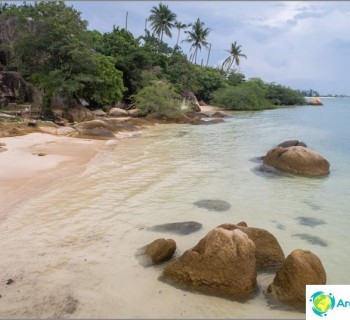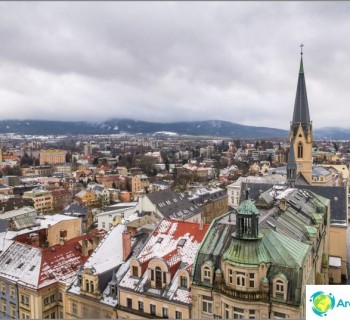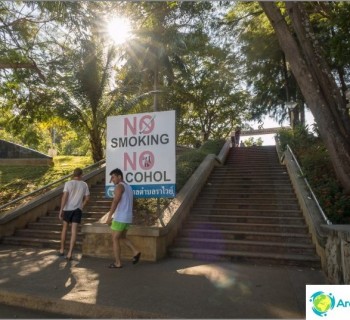Six months ago I got confused on choosing a map for travel, but that didn't end there. While searching for a card, I found out about cashbacks, the use of credit cards, TCS ladders (the system of deposits in Tinkoff bank), replenishment-revocable deposits. This whole set allows, if not to make money, then save on your costs, spending practically nothing, except for your time at the beginning. In other words, this is how you can store money and save it..
It only seems that some commission of 2% (withdrawal + conversion abroad) is a very small amount. If you take spending on the card for the whole year (for example, 50 thousand rubles * 12 months = 600,000 rubles), then a commission of 2% of this amount will already be 12,000 rubles. Add to this the annual service fee, add the absence of a cashback of 1-2% (6000-12000 rubles) and the fact that the money just lay there without interest and did not bring anything. In total, we have on average a new smartphone per year from nothing. But it all depends on what you spend, how much money in general, and what commissions your current bank has. The commission may not be 2%, but 4%, for example, then it will be 2 smartphones.
Earlier, I did not think about it at all, I used Sberbank's ruble card abroad with a not very good conversion rate, and my savings were in Alfabank in an ordinary account, not even on a deposit. In a couple of years of this approach, I think I lost a good amount..
The content of the article
Money storage scheme
Scheme
I came up with some scheme for myself, which is quite obvious (advanced here will not find anything new for themselves), but I did not know anything about it until I started reading the forums. Surely, you can do something else, if you tell me, I will be glad, in fact, I do not pretend to be the only correct option. Here are the main ingredients:
- The bulk of the funds lies on a deposit with high interest rates, for example, in the TKS Lesenka.
- The intermediate part lies on the refillable-revocable deposit or on the piggy bank card.
- Payments in stores are spent from a credit card.
- Cash is withdrawn from a debit card that has a percentage on the balance.
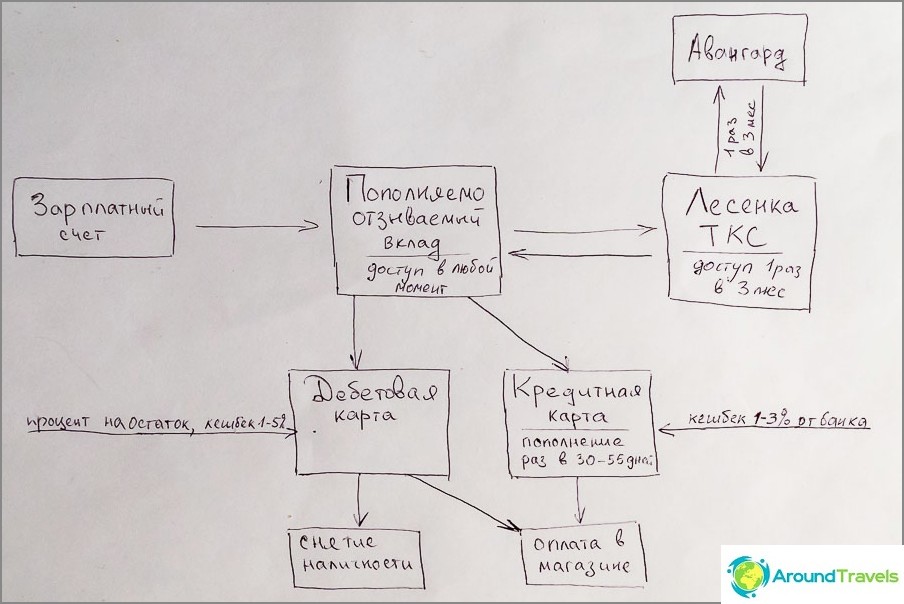
Freehand sketched diagram
Everything can be more complicated than in the picture, because there can be several debit cards, credit cards, deposits, plus foreign currency deposits and dollar cards, but the meaning is just that. In the same way, everything can be much simpler, the Tinkoff ladder (or simply a replenished deposit at high interest rates), and a couple of debit cards. It all depends on how many links you want. This is also important, because it is not always comfortable to have dozens of deposits / cards and constantly monitor changes in conditions. Everyone chooses what is most convenient for him. I have here a certain middle option, when the scheme is not very branched.
Let's consider the situation. The income is received on the salary account. It makes no sense to keep it there, and I throw money on a replenishment-revocable deposit, this is an intermediate stage. Further from there, when the time comes, I transfer it to the debit card I need (for withdrawal), to the credit card (loan repayment), or I increase the deposit on the TCS Ladder.
Perhaps not everything is clear now, but I also did not understand how to do this so that all the money was always at interest, and so as not to pay for the annual service. I remember that my eyes ran away from the choice of cards and deposits, but I chose once and so far everything suits me Yes, and as I wrote above there is also a comfort factor, I made as many links in the chain as it does not bother me, how much I can keep in my head.
Interbank transfers
When building a scheme, it is also worth considering the cost of an interbank transfer between accounts, otherwise it may eat up part of your earnings.
For example, in Avangard, the interbank costs only 10 rubles, from TCS it is free, Alfabank takes a commission of 0.3%, Sberbank 1%, Homecredit is also free. Foreign exchange interbank banks are always paid. Therefore, to drive money between the steps of the TCS ladder, the majority uses Avangard. And, for example, sometimes I transfer the entire amount from the individual entrepreneur's account there (I have a payment of 30 rubles), and then I spread it to other places (10 rubles per payment).
You also need to remember that the interbank bank does not work on weekends..
How to keep money
I will analyze the main elements of the circuit. It will not be possible to paint all the nuances in one post, so consider my post as an overview for those who are not at all in the subject.
Refillable-revocable deposit
As a replenishment-revocable deposit, you can use piggy bank cards. Usually, such cards give somewhere around 5-10% per annum. If you use a card, then you may not need a separate replenishment-revocable deposit, because from this debit you can periodically withdraw cash and pay with it. But on deposits there are higher percentages than on piggy bank cards, and it is better not to light up a card with a large amount of money once again. Again, the choice remains with the one who builds this scheme..
The conditions for deposits / cards change, so it is not always possible to use the same ones. Also, it seems to me that it is safer to keep money in TOP banks, where the interest is not too high. In the summer, I didn’t fall for the most profitable, such as 12% from the 2T bank, which some preferred then, and it’s good, since its license was revoked. Although now interest is growing everywhere, while the ruble is falling, and the 12% rate is already quite common. By the way, the top banks have really good interest rates in MKB (Moscow Credit Bank), but the interbank fees are not encouraging.
Piggy bank card theme
Topic about replenishing-revocable deposits
I have TKS Black piggy banks as a card with 8% on the balance (and it seems to me that they will soon raise the rate). The good thing about the card is that it can be used in everyday life, setting all sorts of limits in the Internet bank for security. We are waiting for the appearance of accumulative accounts at TCS, so that you can keep money not on the card itself. And as a replenishment-revocable deposit, I temporarily use the Good News 9% of Homecredit deposit, it is convenient to transfer it from it to a credit card even on weekends. As you can see, not the best deals, there are rates from 10-12% for these purposes. The choice is yours.
Debit cards
I will not repeat myself, I listed the cards in the post about choosing a map for travel, each is used for a specific purpose. I specifically chose without banking service, so as not to worry that I do not use the card, but money is dripping.
There are now two main debits: Tinkoff Black for withdrawing money in Russia, Corn for withdrawal and payment in shops abroad. Since Kukuruza does not have a percentage on the balance, I don’t keep much money on it, I throw it at it from the cards attached to my account a couple of times a month.
Credit cards
You need a credit card to pay in stores. Instead of using your funds, it is better for them to be on the deposit and bring a small profit. In addition, it is convenient that you do not need to think about how much money is left on the card. The main thing is just not to forget to top it up on time, until the free period (grace) ends. Or, for example, when renting a car on the Internet, an insurance deposit of 20-50 thousand rubles is blocked on the card, it is more convenient if it is not your own funds, but borrowed funds. The main thing is not to withdraw cash from a credit card, otherwise there will be high interest rates for withdrawals and departure from grace. More details about using a credit card I wrote a whole post. A damn convenient joke, you just need to use it correctly..
In principle, a credit card is optional, instead of it a piggy bank card will do, then there will be one more link less. But it must be borne in mind that some credit cards have a good cashback, which, for profitability, can easily block the piggy bank card. For example, a Tinkoff AllAirlines credit card gives a 2% -10 cashback in the form of miles. There are different proposals, you need to look at the current ones and choose the most suitable ones. As a matter of principle, I now use credit cards with cashback and, in particular, this very AllAirlines.
Cashback on bank cards
I will briefly tell you about cashbacks, if anyone does not know. The bottom line is that a certain percentage is charged for card transactions, most often it is 1%. Obviously, in order for this to be profitable, you need to use the map everywhere. In large Russian / European cities, this will not be a problem, given that it is not very convenient to carry cash in your wallet, you need to constantly think about not running out of cash and then look for an ATM in the store to withdraw money. In Thailand, unfortunately, you can only pay in supermarkets, if renting a car from network distributors, yes in some shops in the mall.
You say 1% is not enough? In fact, 1% cashback is comparable to a deposit of 10% per annum, or a piggy bank card with 10% on the balance, although it seems that the percentage is as much as 10 times the difference 🙂 Thus, the cashback is from 2% (and sometimes it is 3% or 5 -10% in selected categories) comes out more profitable than a deposit. More about the various cashback cards, how to choose, etc..
Tinkoff deposit ladder
I turn to the most important thing, if I may say so. The theme has been living for a long time, it is used, but I learned about it, so to speak, the last. If anything, then the bank is also in the know, and does not fix any obstacles. In order to use, you need to either order a Tinkoff Black card, or open a deposit in Tinkoff. After that, you will get access to the Internet bank, where you can open / close any deposits at any time..
Description of the circuit
Interest rates on deposits of Tinkoff Bank have changed several times, and the bonus for the interbank market has become only 0.5% (previously it was 1.5%), so the ladders have lost their relevance. That is, a ladder can be made, but it is no longer so profitable. Please note, the information in the post / comments could be out of date, everything changes too often.
The fact is that when replenishing a deposit in Tinkoff, a bonus of 1% of the transferred amount is given. This is positioned as compensation for interbank expenses. Accordingly, if the interbank is free, then this 1% is your additional profit. Naturally, it is not enough to get this bonus one-time (although this already increases the interest rate on the deposit), therefore, a system of deposits is made, the so-called Tinkoff ladder of deposits. You need to open a new deposit and close the old one every 3 months, so the bonus will be every 3 months. This approach now brings (after the rate cut in mid-2015) about 16% per annum with a built staircase.
I will sound the scheme. Always, apart from the very beginning, you will have 4 deposits open. One main one with the entire amount transported every 3 months round-trip (via Avangard) with a 1% bonus, the remaining deposits from 50 thousand rubles for fixing, since this is the minimum amount of replenishment (before it was 30 thousand). The minimum amount for building a staircase is 200 thousand rubles.
Thus, after a while, a ladder of deposits will be built from 4 annual deposits. The huge advantage of such a scheme is that we have a high percentage at the same time with access to funds once every 3 months. Indeed, during the round trip, we can take the required amount and use it. While in other banks you will have to open an annual deposit (so that at maximum interest), but in most cases access to it will be closed throughout the whole year, maximum replenishment, early withdrawal of 30% of the amount, or early withdrawal of the entire amount with the loss of all percent.
Ladder in Excel - data may become outdated, as TCS changes rates, but they can be changed in a file.
3-6-6-12
First stage: you open 3 deposits: for 3 months (principal amount), for 6 months (50 thousand rubles) and for 12 months (50 thousand rubles).
The second stage: exactly 3 months later, your 3-month deposit with the principal amount is closed, you transfer this money to Vanguard, and send it back to the 6-month deposit. In parallel, you open more deposits for 6 and 12 months. That is, now you have 4 contributions: for 6 months, 6 months, 12 months, 12 months.
The third stage: The 6-month deposit with the main amount is closed, it is distilled to the Vanguard, and sent back for the 6-month one. You open a new deposit for 12 months. Now you have the following deposits: 6 months, 12 months, 12 months, 12 months.
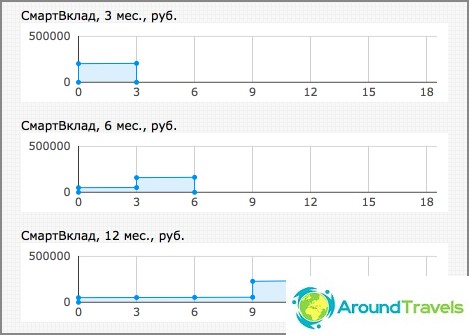
First stage scheme
3-6-9-12
Slightly less profitable scheme, but more understandable.
First stage: you open 4 deposits: for 3 months, for 6 months, for 9 months and for 12 months.
The second stage: exactly 3 months later, your 3-month deposit is closed, you transfer this money to Avangard, and send it back to the 6-month deposit. In parallel, you open another deposit for 12 months. That is, now you have 4 contributions: for 6 months, 9 months, 12 months, 12 months.
The third stage: Similarly, the 6-month deposit with the principal amount is closed, distilled to the Vanguard, and sent back to the 9-month one. You open a new deposit for 12 months. Now you have the following deposits: 9 months, 12 months, 12 months, 12 months.
Restrictions
You can have no more than 6 deposits in one currency.
Each deposit has a limit on the period for receiving the bonus - replenishment with a bonus is possible 85 days before the end of the deposit. That is, if you build a ladder day after day, then you will have about 5 days. If you top up later than 85 days, the bonus will no longer be credited. All dates are available in the Internet Bank, you can set yourself a reminder so as not to forget. You can also do «gap» more to worry less. And it should be borne in mind that the interbank does not work on weekends and holidays, and the latter can be very long, such as New Year's, and then the ladder may be interrupted for a while if the interbank is on these dates.
Diversification of funds
In the face of the fall of the ruble, it became clear to everyone in what currency the money should be kept - in different ones! At least in rubles, dollars and euros. More experienced people probably store in other currencies (in some yuan), and, most likely, not only in currencies, but in stocks, real estate, gold, etc. But this is not my level yet, so I am not writing for them..
Alternatively, you can build currency ladders, but the currency interbank market costs money (not always a percentage of the amount, but a fixed amount of 15-20 USD for each transfer), so part of the 1% bonus will be lost. It makes sense to build a currency ladder with a large amount, near the DIA threshold (700 thousand rubles) or higher, then the losses will be less noticeable.
I thought about diversification in the summer and autumn of 2014, when the dollar exchange rate was still not so high, so I managed to save some of my small savings. And this is great, because when you are abroad, the course is felt most acutely. In Russia, prices have not yet doubled (but this is a matter of time), but in Warsaw we immediately felt a sharp rise in prices in ruble terms. And Yegor's rehabilitation has also doubled in price, and now not all Russians can afford to come here, it's a pity.
I don’t know in what ratio the currencies should be stored. But in the long term, it makes sense to store it in just a few: the ruble has fallen - so we have the dollar and the euro, the currency has fallen - so we have the ruble. Otherwise, you will have to constantly monitor the course and shift it back and forth. True, lately it is not at all clear where the ruble is at the bottom; it will not be possible to cover losses at such a rate, even in the long term and at the expense of any ruble ladders of the TCS. Plus, there are various horror stories that something like this can happen, up to the ban on the circulation of the dollar in Russia. Why diversification can include an item on how to keep money at home under the pillow.
P.S. I don’t know the answer to the question whether it’s worth buying dollars now, and don’t even ask 🙂 Ideally, now you should sell the dollars you bought in the summer of 2014 and fix your profit. Like I bought $ 10,000 in the summer for 300 thousand rubles, and now I sold them for 600 thousand rubles. Consider 100% profit in six months and you can buy a car.
P.P.S. As an addition to this post - went into currency and reduced the number of banks (essentially simplified the scheme), otherwise the crisis is such a thing that there is no trust in the banking system at all.
